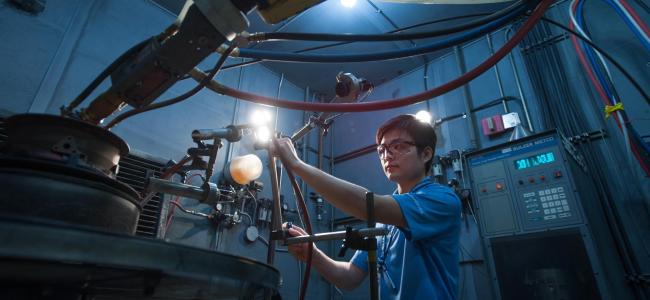
What is the outlook for those who are interested in a career as a transportation engineer? This is a career that combines science and technology to develop transport systems. Its various areas of application include planning, functional design, management, and operations. Transportation engineering offers many rewarding career opportunities. If you are passionate about solving problems, this may be the right career path. Read on for more information. Also read on to learn more about what education you need and what to expect from your future.
Duties
A career as a transportation engineer requires you to design various modes of transportation and infrastructure systems. You might be responsible for drainage systems, erosion control systems or bioretention systems depending on where your work is located. Your job may include planning changes to existing transportation systems, or designing new ones. They also evaluate and plan transportation projects. A 2012 survey found that 67% of transportation engineers are happy with their job.

You will need to be innovative and apply science to your job as a transportation engineer. You may work in governmental agencies, vehicle manufacturers, railroad companies, or as a consultant to various agencies. Transportation engineers are responsible for planning, implementing, and maintaining all modes of transportation. These engineers are responsible for all aspects of transportation planning and analysis, as well as constructing and maintaining them. You will also be responsible in ensuring safety for routes and infrastructure.
Education requirements
To pursue a career in transportation engineering, you must first complete a bachelor's degree in an engineering field from an accredited university. Many transportation engineers pass the Fundamentals of Engineering exam after completing their bachelor's degree. This allows them to be eligible for internships or entry-level positions in engineering. To gain valuable work experience, you can also take this exam before graduating. Read on for information regarding education requirements related to transportation engineering. For these positions, you must have at least 8 years of engineering experience.
For graduate students in transport engineering, they should have a strong foundation in mathematics and computer programming. If you don't have these courses, you can take an identical course for no graduate credits. Your degree will require nine graduate credits. Once you have chosen a mentor, you will need to fill out a questionnaire that collects information about your education history and work experience. The mentor should also be able inform you about any other courses you should take as part a graduate degree.
Career outlook
The field of transportation engineering has many opportunities. This field is an excellent choice for engineers due to the need for reliable and safe transportation. According to the Bureau of Labor Statistics for 2018, transportation engineers are expected to see 11% growth in their jobs. This is faster than all other jobs being monitored by the Bureau of Labor Statistics. Transport engineering can be a great way to reduce traffic congestion and help make communities more efficient. This field is a good fit for those who love public service.

You can start a career in transportation engineering while you are still at school. The fundamentals of engineering are often completed by students interested in transportation engineering. They then receive the engineer as training (EIT). Internships, entry-level positions and other opportunities may be available at some schools. Additionally, students may find information about job listings on websites that are run by government agencies or professional associations. For recent graduates, some companies may also offer job listings. If the transportation engineering field is your choice, you can work in any area of transportation engineering.
FAQ
What are industrial engineers doing in their day?
Industrial engineers investigate how things interact, work and function.
They ensure that machinery, plants and factories operate safely and efficiently.
They design and implement equipment, controls, or operations that make it easier for workers, to accomplish their tasks.
They also ensure compliance with environmental regulations and safety standards.
What does it mean to be a mechanical engineer?
A mechanical engineer designs machines, vehicles, tools, products, and processes used by humans.
Mechanical engineers apply mathematics, engineering principles, and physics to find practical solutions for real-world issues.
A mechanical engineer might be involved in product development and production, maintenance or quality control.
Engineering What?
Engineering, in short, is the application scientific principles to make useful things. Engineers use their knowledge of mathematics and science to design and produce machines, vehicles.
Engineers are involved in many areas, including research and development, production maintenance, testing, quality assurance, sales, marketing management, consulting law, politics, finance and human resources administration.
A variety of responsibilities are available to an engineer, such as designing and building products, processes, and systems; managing projects; performing tests, inspections; analysing data; creating models; writing specifications and standards; supervising employees; and making decisions.
Engineers can specialize in certain fields, such as mechanical, electrical, chemical, civil, architectural, computer, biomedical, manufacturing, construction, aerospace, automotive, nuclear, petroleum, mining, forestry, geology, oceanography, environmental, and more.
Engineers may choose to concentrate on specific areas of engineering such as aeronautics or biotechnology.
Is engineering hard to study?
It depends on your definition of "hard". If you mean it is difficult, then you can say yes. However, if you mean boring, then you should not. Engineering is not difficult because it requires a lot physics and maths.
If you want to learn how to do something, go for it! To become an engineer, you don't necessarily have to be an engineer.
Engineering is fun, as long as it's something you like.
One could argue that engineering is easy if you understand everything. This is not true.
Engineers are boring because they haven’t tried other things.
They've just stuck to the same old thing day after day.
However, there are many solutions to problems. Each approach has its advantages and disadvantages. They all have their advantages and disadvantages, so try them all and decide which one you like best.
How long does it take to become an Engineer?
There are several routes to engineering. Some people choose to study right away after graduating from high school. Others prefer to enroll in college.
Some students will start a degree program as soon as they graduate high school. Others will begin a two-year foundation degree course.
After completing this, they might continue onto a three or four-year honors degree. Alternately, they might choose to get a master's.
When choosing which route to follow, you should consider what you want to do once you graduate. What career path do you prefer?
It takes different stages to complete, depending on which university you go to and whether you are taking a part-time or full-time course.
But it's important that you remember that experience and how long it took you to get a particular qualification don't always have a direct correlation. So even if you only spend one year at college, it doesn't mean you'll have all the skills needed to work as an engineer.
What is a typical day in life of an engineer?
Engineers spend much of their time working on projects. These projects can include developing new products and improving existing ones.
They may work on research projects that aim to improve the world around us.
They could also be involved creating new technologies such computers, mobile phones and planes, rockets, or other devices.
Engineers have to use imagination and creativity in order to achieve these tasks. They should be able and willing to think outside the boxes to come up with creative solutions.
They will be required to sit down with their ideas and develop them. They will also need to test their ideas using various tools, such as laser cutters, CNC machine, 3D printers, and computer-aided designing software.
Engineers need to communicate well to convey their ideas to others. Engineers must create reports and presentations in order to share their findings with clients and colleagues.
They will need to use their time efficiently in order to do the maximum possible work in the least amount of time.
No matter which type of engineering you choose to do, you will need to be creative, innovative, analytical, and well-organized.
Statistics
- 14% of Industrial engineers design systems that combine workers, machines, and more to create a product or service to eliminate wastefulness in production processes, according to BLS efficiently. (snhu.edu)
- 8% Civil engineers solve infrastructure problems. (snhu.edu)
External Links
How To
How to read engineering drawings
Engineering drawings offer a visual description for an object. There are many elements in these drawings such as text, dimensions and symbols. Engineering drawings have been around from ancient times. In Egypt 3000 BC, the first drawing was created. Engineers use them for designing objects such as bridges, machines, and buildings.
Engineers use engineering drawings to describe what something looks and feels like. It aids others in understanding what you're talking. Engineers create things using numbers and symbols to indicate measurements. This makes it simple for people with no engineering knowledge.
There are two main types of engineering drawings: 2D and 3D.
2D drawings represent flat representations of three-dimensional objects. These include plans, sections and elevation views.
3D drawings are a way to visualize real-life objects in multiple perspectives. They are typically created using computer software. SketchUp is a program that allows you to visualize the structure of a bridge from above. Select "View" and then "Top View." Then rotate your view until all of it is displayed from above.
You should always look at the entire picture when looking at 2D drawings. Focus on the whole picture, not just one section. It is important to pay attention to everything in the top-right corner.